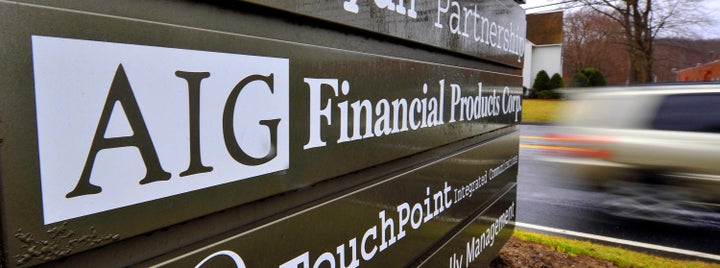
As AIG and the government hammered out a plan last week to repay taxpayers for the bailout worth up to $182.3 billion, the U.S. Treasury reckoned the total cost would be less than $50 billion, and it might even turn a profit, the New York Times reported.
But the specifics of the paydown, which will involve settling obligations to the New York Federal Reserve and to the Treasury, have raised questions about the insurer's ability to make good. NYT's Andrew Ross Sorkin argues in his DealBook column this week that in a best case scenario, AIG could repay its debt in full and even leave the government with a $13 billion profit.
To make the calculation, Sorkin starts with the rounded number of $130 billion (since the government never actually ended up using the full $182.3 billion). Subtracting the revenue from assets that AIG will sell -- and other assets that the government could sell -- whittles that down to $71 billion. To reduce that further, Sorkin says, AIG will use money it's borrowed from the Treasury to repay the Fed, a move he admits is akin to "moving money from one hand to another."
Reuters' Felix Salmon takes issue with that step in Sorkin's logic: As Sorkin admits, taking money from one government body and giving it to another doesn't constitute repaying debt. But Salmon offers an explanation. He refers to the AIG press release and concludes that AIG will raise the money to complete the transaction by selling securities that the New York Fed now owns.
The real contention comes next. Sorkin says AIG will, at that point, owe the government $49 billion, which it will repay as the government converts its preferred shares in the company to common stock. Such a move would increase the government's stake in AIG to a whopping 92 percent, would dilute private shareholders, and increase the value of the government's stake to $62 billion. It would win, Sorkin says, a $13 billion profit.
But Salmon begs to differ. His argument, essentially, is that Sorkin neglects to consider the original value of the government's stake in equity, which, if the company is currently worth $26 billion and the government currently owns 80 percent of that, is about $21 billion. The value of that stake increases only $41 billion in the conversion plan. But that $41 billion is still $8 billion short of the target. Or, put another way, the government will start with $49 billion in debt plus $21 billion in equity (for a total $71 billion stake) and end up with only $62 billion in equity.
Both opinions, it should be noted, are speculation. Any number of variables, such as the behavior of private shareholders, could change the game entirely. According to the plan, the stock conversion will happen in early 2011, after the debts to the New York Fed have been repaid.